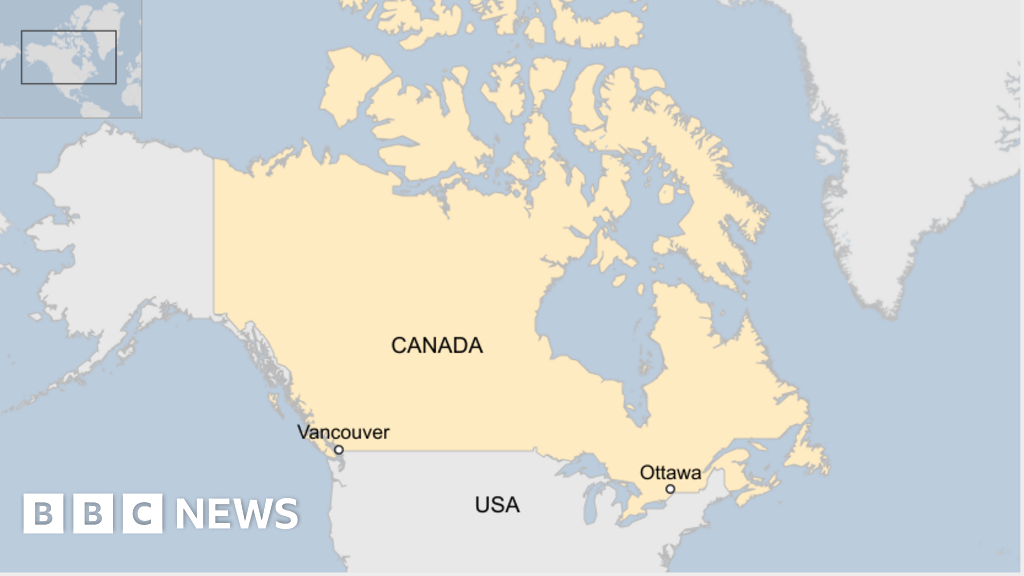Ben Morgan’s Pacific Update: Confused US trade and foreign policy is the Pacific’s biggest security risk

The first 100 days of the Trump White House has been chaotic. The new White House started its tenure by reducing support for Ukraine, being rude to its European allies, threatening to annex Greenland, and openly questioning the validity of NATO. Actions followed by announcing a punishing and poorly thought-out regime of new tariffs on friend and foe alike that has caused chaos in the world economy. A hallmark of the Trump administration’s diplomacy is the churlishness of its statesmen, who consistently speak about their European allies in disparaging terms, demonstrating they know little about history, or do not care. Vice-President Vance, Secretary of Defence Hegseth and Special Envoy Witkoff all making disparaging comments about NATO members. The irony of the alliance’s only war being triggered by an attack on the US, that saw many European soldiers killed or maimed, appears to be lost on them. The US’s confused attempt to use tariffs to bully other nations into negotiating trade agreements, further increases uncertainty. Previously, well-respected and long-standing allies like the UK, European Union, Canada, Australia, Japan and South Korea were all tariffed. Sometimes at higher rates than authoritarian regimes or US adversaries. Australia’s Prime Minister, Anthony Albanese recently characterising the new tariffs as ‘not the act of a friend.’ After World War Two the US built a series of trade partnerships and alliances, held together by a set of rules and an international order based on institutions like the UN, World Trade Organisation (WTO) and International Monetary Fund. The rules-based order encouraged free trade and protected the interests of smaller nations, underpinned by these US funded institutions. US military power supported this order – for example the US Navy supports freedom of navigation in the Red Sea or around the Horn of Africa. Paraphrasing Russian academic Aleksandr Solzhenitsyn, the US was the “world’s policeman,” a position President Trump’s administration is signalling it is keen to resile from. In my opinion, the message the new administration is sending is that long-term relationships and history do not matter. Instead of relationships being valued, US foreign policy is dictated by short-term transactional calculations. Further, those transactions must benefit the US, and Ukraine being manoeuvred into buying American aid through a mineral deal sends a clear message that the rules are changing. That the US is no longer a dependable ally, a situation that can be extrapolated as a significant change in the international security architecture. The Pacific is a frontline of Sino-American competition and US actions will impact on the region. Allies and partners of the US questioning the reliability of their security arrangements, while rivals exploit America’s self-inflicted weakness. China’s response China’s response to the new White House, has been measured. China’s leader Xi Jinping is an astute statesman, and understands the weakness of current US policy. It seems that Xi appreciates that Trump is clearly doing plenty of damage to US interests, without his intervention, so is presenting China as a reliable, sensible trade or security partner. A champion of free trade, globalisation and the rules-based order. Statements followed by diplomatic action, on 9 April Reuters reported China has filed a complaint with the WTO about US tariffs that they describe as “reckless.” An example of Chinese ‘Three Wars’ theory in action, using ‘legal warfare’ to challenge US moral authority and credibility. Speaking in Vietnam on 15 April President Xi praised global free trade stating both countries “should firmly uphold the multilateral trading system and jointly promote the development of economic globalisation in a more open, inclusive, equitable and balanced direction.” Xi described American tariffs as “unilateral bullying,” and encouraged Vietnam work with China to oppose it. A message clearly crafted for worldwide audience. But China’s reasonableness is backed by strength, evidenced in Xi’s treatment of US tariffs. China’s response is careful, considered and proportionate, and has already forced Trump to back down. Xi has not over-reacted, and retains negotiating leverage because he knows that if China starts to dump US Treasury bonds, he can crash the US economy. Instead, Xi is ignoring Trump’s phone calls and dragging out the discussion, probably aiming to force the US to re-negotiate on his terms. The situation is counterintuitive, Trump’s administration clearly sees China as its main security competitor. If Trump had built support in Europe and amongst other nations in the Indo-Pacific, he may have been able to engage in an effective trade war with China. NATO’s 2023 Strategic Concept names China as a threat. NATO worked closely with the US developing cyber security responses to Chinese threats. So, it seems likely that the alliance would have been willing to support the US in an economic conflict with China. Instead, the US economy is deteriorating daily and Trump’s negotiating position is weak. A situation that enhances Chinese influence in the Pacific. North East Asia – Japan and South Korea Japan and South Korea are essential elements of any US plan to militarily contain China or Russia, providing bases and significant military resources. However, Japanese and South Korean diplomats are clearly concerned by the new White House’s erratic behaviour. Specifically with regards to the impacts of US trade policy, a point noted on 3 April in a The Conversation article, titled ‘Faced with new tariffs and a truculent Trump, Japan and South Korea toe a cautious line,’ that includes the following assessment that “A trade war could also prompt a reassessment of the costs of US efforts to decouple from China, potentially leading to closer economic ties between Japan, South Korea and China. The three countries have agreed to accelerate talks on a trilateral free trade agreement, which had been on hold since 2019.” At the same time, Associated Press reported that the trade ministers of China, Japan and South Korea held their first joint discussion in five years. This meeting in an era of increasing security tension is an indication of how deeply US trade policy has impacted on Japan and South Korea. Unlike Europe, the US is clearly still keen to engage over security with these nations. US forces remain firmly embedded in both nations. However, South Korea pays America US$1.14 billion and Japan US$1.72 billion annually to cover the cost of basing forces in their countries. This year, both countries are due to renegotiate these deals, and may question the costs. Japan is in negotiations with the US about the current tariff regime, and is not happy with the Whitehouse’s position. Japanese Prime Minister Shigeru Ishiba saying on 21 April that he has “grave concerns” about American trade policy. Shinji Oguma, leader of Japan’s parliamentary opposition has also spoken about the tariffs describing them as “extortionate.” Han Duck-soo, South Korea’s acting-president has not started negotiations with US yet and is remaining upbeat in his public statements. However, it is unlikely that South Korea or Japan will change their security arrangements with the US, the threat from China, Russia and North Korea is simply too high. But both countries are likely to be concerned about the uncertainty created by the new Whitehouse’s policies. Therefore, we should expect to see both nations developing closer trade partnerships with China, and looking further afield when building security relationships. For example, NATO Secretary General, Mark Rutte visited Japan on April 8-9, and discussed strengthening defence arrangements. Japan already has a close defence relationship with Europe but Rutte’s visit is a reminder that these Japan, NATO and NATO’s IP 4 countries (Australia, New Zealand, Japan and South Korea) working together more. Taiwan’s position remains tense, China’s claims are still forthright and its military conducts regular threatening exercises. However, like Japan and South Korea, America needs Taiwan if it wants isolate China in any future conflict so is unlikely to allow an invasion. Instead, China will probably pivot off America’s unpopular actions to build closer relationships with other Asian nations, isolating Taiwan. A model already exists in the wider Pacific, China utilising ‘soft power’ to get small Pacific nations to stop their diplomatic recognition of Taiwan’s independence. Now that American moral authority and commitment to its allies has been undermined getting larger nations in Asia to cooperate will be easier, and it seems likely that Taiwan’s independent status will be challenged more over the next few years. South East Asia and the South China Sea Although China’s political rhetoric is less aggressive recently, it is still actively engaged in the South China Sea. An example of how it is best to judge politicians by their actions rather than their words. Recently, an article in The Inquirer quoted figures from the Asia Maritime Transparency Initiative (AMTI) of the Centre for Strategic and International Studies, showing that Chinese ships spent 1,939 days in other countries waters, during 2024. China’s operations in the area have not slowed down this year. However, China is keen to present a more nuanced perspective, for example a South China Morning Post article on 21 April titled ‘Chinese scholars suggest peaceful path with Philippines in South China Sea dispute’ is indicative of China trying to tone down its rhetoric and position itself as a reasonable trade partner, in contrast to the US. China is on a diplomatic offensive, President Xi travelling widely in Asia and meeting with other governments. Xi recently toured Vietnam, Cambodia and Malaysia with message of unity and free trade, stating in Malaysia that “Together we will safeguard the bright prospects of our Asian family.”Speaking in Vietnam President Xi praised global free trade stating both countries “should firmly uphold the multilateral trading system and jointly promote the development of economic globalisation in a more open, inclusive, equitable and balanced direction.” Xi described American tariffs as “unilateral bullying,” and encouraged Vietnam to work with China to oppose it. A message clearly crafted for worldwide audience. China is also keen to improve its security relationships with Indonesia, Vietnam and Cambodia. South East Asian nations that are not allies of the US and Euro News reported on 21 April that “Indonesia and China have reaffirmed their commitment to maritime cooperation, vowing to strengthen joint efforts on security and safety in the contentious South China Sea, even as Indonesian unease lingers over Chinese activity near the Natuna Islands.” This activity is an example of China leveraging diplomatic gain from US trade and foreign policy. The new White House has turned the US into a bullying trade partner, and an inconsistent security partner making a relationship with China an option worth considering for some countries. It is likely that we will see China deepen its diplomatic and security relationships in South East Asia. South West Pacific The South West Pacific is an area of great importance to the US because Australia provides a large, and relatively safe base area from which to support US operations in South East Asia, the South China Sea or Taiwan. The South West Pacific is also an area with vast untapped mineral wealth. Additionally, New Zealand and Australia provide the US with bases and access points to the Antarctic. Noteworthy from a South West Pacific perspective is the US withdrawal from the Paris Agreement of the United Nations Framework Convention on Climate Change. Many Pacific nations are managing the impact of climate change and rate it their most pressings security threat, prompting criticism of from local leaders. Papua New Guinea’s Prime Minister, James Marape remarking in January that “…good global leaders are also responsible world statesmen. They take responsibility not just for their own countries, but also for the planet”. Secondly, the Department of Government Efficiency’s attack on the USAID is reducing, or stopping American financial aid that many small Pacific nations rely on. The Australian Strategic Policy Institute’s magazine The Strategist surmising that “USAID cuts and tariffs will harm the United States’ reputation in the Pacific more than they will harm the region itself.” In the South West Pacific, America’s withdrawal from the Paris Agreement is likely to be interpreted poorly by small nations struggling to manage sea-level rise and the increasing severity of cyclones. Likewise, the withdrawal of American financial aid will have an impact on these economies. US policy in the South West Pacific is very short-sighted for a nation competing with China because it creates a ‘soft power’ vacuum that China is positioned to fill. Several small Pacific nations are ‘on the fence’ between the US and China. Current US policies mean we may witness more countries following the example of Cook Islands and Solomon Islands and drift towards China. China has spent many years building influence in the South West Pacific, slowly building infrastructure like airports and ports that could be used in a future conflict. For example, a Newsweek article, from 14 April titled ‘How China’s Military is Quietly Gaining Control of the Pacific’ states there are 50 potential facilities built by China in the Pacific with a potential military application, in 11 Pacific nations. Sites spread from Papua New Guinea to Samoa, and indicate that China could be planning for a potential conflict by identifying key locations and ensuring during peacetime that supporting infrastructure is built. Newsweek’s article quotes Domingo I-Kwei Yang, an academic at Taiwan’s Institute for National Defence and Security Research’ words in the ‘China’s Dual-Use Infrastructure in the Pacific’ report as follows “The question is not whether, but when, China will complete a civil-military logistics system in the Pacific.” Current US foreign policy contributes to making China’s task easier. New Zealand and Australia are working to address this vacuum, increasing their aid in the region and probably looking for other security partners. Japan and NATO immediately spring to mind, and it is noteworthy that both are increasing their activity in the region. India is another potential security partner and in March the nation’s Chief of Defence Force visited Australia. New Zealand is also actively building its relationship with India. Prime Minister, Christopher Luxon visiting in March and agreeing to closer security relations. It is also noteworthy, that Australia’s 2023 Defence Strategy Review and 2024 Defence Strategy envisages very significant changes in the nation’s defence capabilities. Many predicated on greater inter-operability and force integration with the US, especially regarding emergent technologies like AI, drones and integration of fire control using US digital networks. Australia benefiting from its close association with the US, and allowing more targeted defence spending. However, the current instability of US foreign policy may cause Australia to start looking towards Europe for defence tech, mitigating the risk of posed by the unpredictable US foreign policy. Security issues that need to be managed over the next four years It is likely that China will aim to establish a free trade network, probably starting amongst the large Asian nations recently hit hard by American tariffs Strengthening economic relationships that in turn will increase Chinese influence regarding security issues. This influence can be used to: Acquire greater access to bases across the wider region. Support for Chinese diplomacy in the South China Sea, and Taiwan. In North Asia, the US and NATO will continue to work closely with Japan and South Korea. We should expect to see more exercises and defence agreements between these parties. The key question over the next four years is whether the Trump administration will damage relationships enough to bring Japan and South Korea closer economically with China. A closer trade relationship increasing China’s political and diplomatic leverage. Chinese military action against Taiwan remains unlikely. However, the Trump administration’s actions are already isolating the US, and encouraging other nations to consider working more closely with China. This may translate into more and larger nations accepting China’s claim to the island and resiling from recognising its independence. A similar situation is likely to develop in the South China Sea, and it seems likely that China’s position will strengthen. China improving economic and security relationships with countries like Cambodia and Vietnam. Then working to secure improved economic and security relationships with other regional partners like Malaysia and Indonesia. Chinese influence in the South West Pacific may increase. The US currently demonstrates little regard for the opinions of small Pacific nations regarding climate change, and USAID financial support will be missed. China on the other hand, presents itself as an advocate for acceptance of climate change science and finding mitigations or adapting. Further, history shows China is willing to build ports, roads, airfields and other infrastructure either in exchange of economic concessions, or debt-funded through Chinese banks. Some of which may be useful for China in possible future conflicts. Therefore, we should expect to see more Chinese diplomacy and influence in the South West Pacific. In the South West Pacific’s small nations, the loss of goodwill towards America may tarnish relationships with historic US allies and partners like Australia, the UK, New Zealand or NATO. In turn, making China a more attractive option as an economic or security partner. Expect to see India and NATO influence in the region increase. Already these powers are more active diplomatically, and building security relationships and we should expect to see this trend continue. Since World War Two international politics have evolved, from the bi-polar dynamic of the Cold War, to US hegemony following the collapse of the Soviet Union in 1990. In recent years China’s economic and military power has increased, and it is now a direct competitor of the US. Additionally, Russia has ambitions to reclaim the Soviet Union’s mantle and other large nation like India are growing economic and military powers. A new multi-polar order is evolving, creating great uncertainty. Current US trade and foreign policy encourages and accelerates this trend by weakening the international rules-based order. The Pacific is at the centre of this evolution, the US, China, NATO and India all competing in the region. If US foreign and trade policy remains as chaotic as it has been in the first 100 days of Trump’s presidency, then the next four years could include major changes in the security architecture of the Pacific.

















